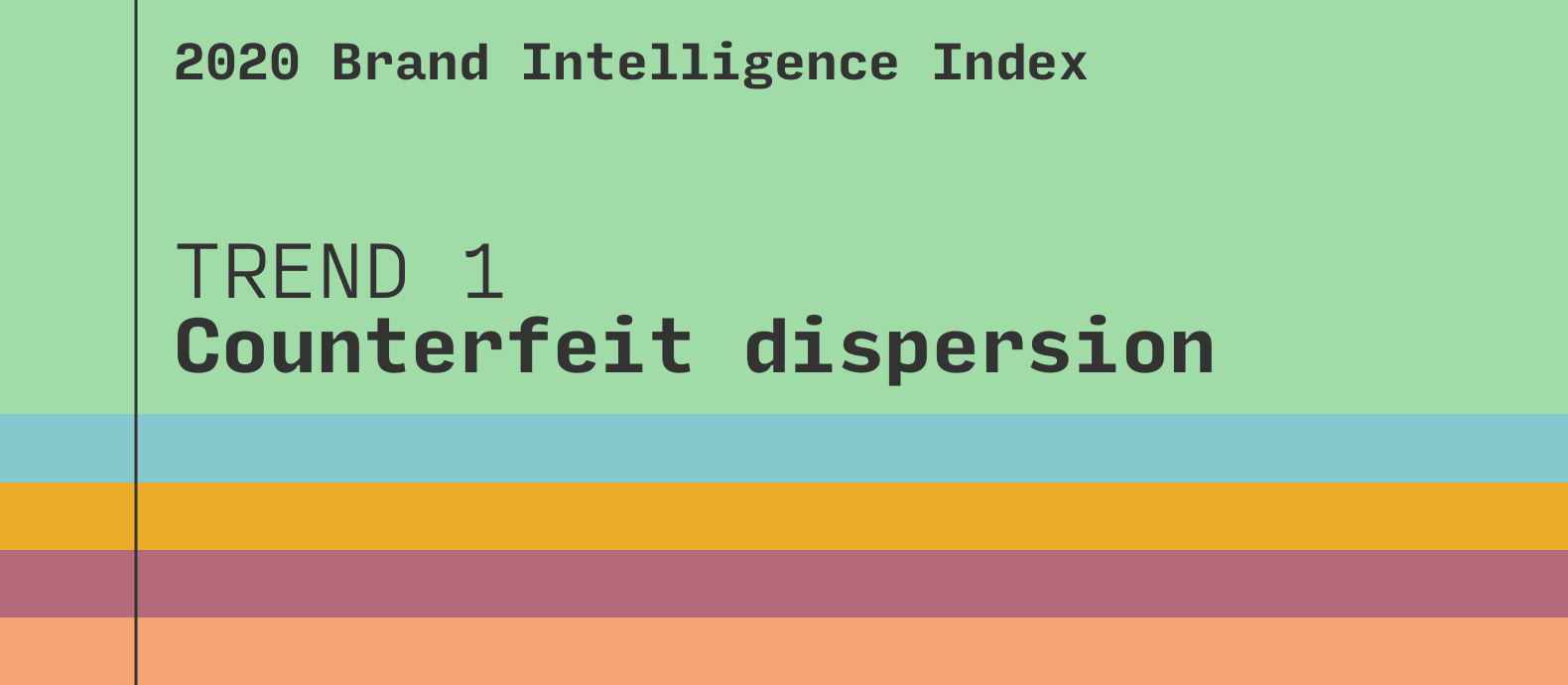
Table of Contents:
Last updated on: June 8, 2022
Red Points carried out a survey with over 100 industry professionals, asking them what they saw as the biggest IP-related threats on today’s online ecommerce platforms. This article outlines the first trend from the five that are set to shape brand protection.
Summary
Check out other IP trends from the Brand Intelligence Index:
For a consumer, buying online has become an experience that can be shared and compared within a series of different communities, and in multiple forms. Social media apps are now a place where consumers discover new brands’ profiles and get redirected to a brand’s checkout store in a matter of seconds. It’s great news for brands, it’s a clever way for them to reach their target audience but unfortunately, a similar tactic is also used by counterfeiters.
A difference with counterfeiters is that they don’t use paid social media advertising techniques as brands do. Counterfeit techniques are blatantly dishonest, using the brand’s name in their profile and in the hashtags of their posts, as well as using images that are taken directly from a brand’s website or authentic social media page. The marketing efforts of brands are simply copied and pasted onto counterfeit pages to have the same look and feel as the original version, portraying an illegitimate sense of quality and trust.
It isn’t a new concept to IP experts, who battle to keep brands safe from counterfeits, but it’s still what they consider the biggest future threat with 46% of IP experts identifying social media apps as a major threat to brands.
Snapchat is the most commonly known short-form social media app. Following its popularity, others followed suit, with some social media apps creating new in-app short video formats for users to share with their followers.
This format is also a space for brands to create original content and engage more effectively with their young audience. And although counterfeiters aren’t known to advertise with their stories, they still put this video format to use. Instead, counterfeiters upload videos of their new stock and promotions in a direct manner, to catch their followers’ attention. Many of them don’t have the luxury of being able to use expensive advertising strategies, but new social media features have given many new options that counterfeiters use to their unscrupulous advantage.
In September 2019, the short-form social media video platform TikTok became the most downloaded non-gaming app on iOS in the U.S. Especially popular with Gen Z, it was originally created for users to record a video of themselves lip-syncing or dancing to their favorite songs for up to 15 seconds. It has since evolved into a general short-form video content app, similar to what Instagram started with Instagram Stories. It caught the attention of brands, and TikTok responded to their demands with the new feature “Hashtag Challenge Plus”, enabling in-app features that allow users to shop directly for the product in question. And when apps enable brands to drive sales, it soon becomes a new outlet for counterfeiters to do the same.
These new types of social media apps are leading to a new outlet for counterfeiters to source their own audience. Social media apps can find it difficult to sift out fraudulent users from their platforms. There are ways to report and eventually block IP-infringing users, but this is only if they are accordingly notified of the situation. It is getting increasingly difficult to do this manually, with the number of new social media apps and the rising number of counterfeiters online.
Social media is often the first step to attracting a counterfeiter’s audience. They’re able to create stories to promote new stock, or even add the name of the original brand they’re copying in hashtags, as long as they keep their profiles private and monitor who is requesting to view their profile. Social media is just the tip of the iceberg, there’s an increasing number of online options for counterfeiters to catch the consumer’s eye today.
The next step is redirecting their potential clients to their product page. Using encrypted instant messaging apps that are private and enable counterfeiters to keep their contact and update them on new stock arrivals. A link is sent safely to clients, sending them to a marketplace or a website created with all their counterfeit products. According to the Brand Intelligence Index report, 11.2% of IP experts expect encrypted messaging apps to be a problem.
When counterfeiters create their own websites, many unethical blackhat SEO techniques are used to rank highly in search engine queries, fooling consumers into thinking they are going to a legitimate brand’s website. For example, filling a web page with the keyword they wish to rank for, also known as keyword stuffing. As on each platform they use, the images that consumers see are identical to those on original brands’ websites. The layout of these websites are created to look just like the original brand’s website, duping many consumers into thinking they’re on a legitimate website.
If found on a marketplace, counterfeiters also use keyword techniques to rank high in searches. They can sometimes be found right next to the original product, making it difficult for consumers to see the difference.
Perhaps the most valuable tactic for counterfeiters on marketplaces is manipulating reviews. Private groups are created on social media, where the counterfeiters recruit consumers to send their products without charge in exchange for a positive review on their listing. Alternatively, online freelancing services like Fiverr can be used to find people willing to leave positive ratings and reviews for a nominal fee. With a multitude of five-star reviews, these listings become more popular and mislead consumers into thinking they are buying a high quality product.
PPC advertising (pay per click) on search engines are product listings that appear at the top of search engine results when a specific branded keyword is searched. The brand simply pays for each click on a product listing that the search generates. The brand that bids the highest amount gets the keyword in question. This sometimes results in counterfeiters bidding highest, redirecting to their own seller page and leading consumers to buy fake versions of what they were originally looking for, once again.
Although the commonly used search engines use machine learning to combat counterfeiters, some still slip through the cracks. There are constant updates to aid brands in fighting their counterfeits, but the constant growth in counterfeit sellers makes it difficult for brands to keep up. Data from the Brand Intelligence Index found that from Q1 2018 to Q1 2019, counterfeit listings rose by 40%.
Monitoring these manually proves very difficult. Without using machine-learning technology for IP protection, scanning the internet for fake listings and websites effectively proves impossible. Only 6% of IP experts surveyed expect growing challenges from marketplaces and search engines. With new social media platforms emerging that are proving to be the bigger challenges, search engine PPC advertising might not be on top of IP experts’ priority list, but it’s still one to keep monitoring.
